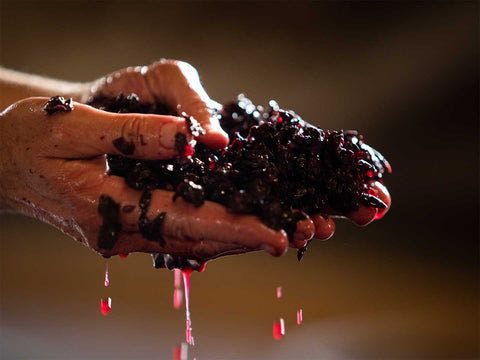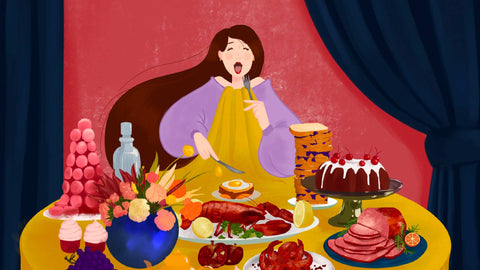Some people are an acquired taste. Some people you can’t stand, or can only just bear, no matter how long you try to make it work. While some, you adore within a few meetings or minutes. Doubtlessly, you know someone like this.
For me, it’s my best friend Dana. She’s a force of nature: bold, honest, crass, and doting all at once—unfiltered at every turn. Expletives sprinkle her everyday language, with a kind of crude-flavored wit that could get her as many laughs as looks. Nor does she shy to say “I love you,” as easily as she knows her own name; as frankly as she gives it when asked. Her untamable boldness is truly a thing of awe; none of it is to shock, goad, or stand out, but it is rawly who she is. I’ve loved every bit of her since the very beginning—but some aren’t so fond. They find her “too much.”
Natural wine is like this: a divisive character in the world of wine—a bold, untamed friend with some risk in the making, but one that is unfailingly honest once you click. It’s just a matter of what you can stomach.
Raw nature
First impressions matter, and they usually last. For many, their unfortunate first impression of natural wine is literally rough: the cloudy color, its funky taste, the grit it leaves on the palate and the back of your teeth—it can certainly be off-putting. More so when the long-standing impression of wine is of a refined drink, both literally and metaphorically.
Wine does evoke certain kinds of setting and cast: pressed suits, svelte silhouettes, and slender flutes clinking among esteemed cliques or sultry nights and only the distance of a bottle between kindred spirits, sharing intimacies of the mind in rooms as wine-dark as their goblets. Or more intimately yet: a glass with oneself, whether indulgent or needed.
Good wine is soothing and suave. The seeming crudeness of natural wine, thus, feels like a betrayal to the ideal and yet it is the closest portrait to the earliest wines.
Natural wine is made closely following the first winemakers’ processes—with only minimal intervention, letting nature run much of its course. Viticulture—the cultivation of grapes specifically for winemaking—is grown biodynamically with no pesticides or herbicides, and the harvesting is typically done by hand. In winemaking, wild rather than synthetic yeasts are used in fermentation; no fining, clarification, or (tight) filtration is applied to remove solid particles; and it’s free of the more than 70 approved additives used in conventional wine. Little to no sulfites are added to natural wine upon bottling, going far below the 350 parts per million allowed in wine with only around 10 to 100 ppm.
The result is as organic as can be, hence “natural wine.”

Though, without the use of advanced machines and methods, natural wine is quite a different product from the norm—flawed, if held up to traditional standards. It is prone to variations in taste from bottle to bottle; hazy and rough with unfiltered sediments; and there’s a higher risk of spoilage due to how reactive natural wine is to its environment. Battling these issues makes its laborious production even more meticulous as well.
So, while wine’s early pioneers had to rely on the methods of their time, why do natural winemakers opt for the old ways by choice? It’s a matter of different values.
Around the start of our friendship, Dana and I promised to always be honest with each other. With the feelings we hold close to our chest; our flaws and the wrongs we’ve done; to our genuine day-to-day selves, unrefined as we can be. It is a cornerstone of our relationship that we still thrive on.
Like this, natural wine is willingly stripped; there is none of the fine-tuned processes that perfect conventional wine. It is instead for those who care for the purity of where their wine comes from and in how it’s made.
Acquired notes
Natural wine is also known as “living wine,” reverent of nature’s touch in the microbial life that transforms the wine from the vineyard to the bottle and onwards. Similarly, it’s alive in the way it’s changed by the working hands that have touched it.
Like any circle of friends, each person is nonetheless unique; natural winemakers have their own ways about their craft, too. Some bury the grape juice to ferment it, like the Georgians in 6,000 BC who began natural winemaking in this way; some age them in clay or terra cotta vessels rather than wood barrels or steel vats. Some crush the grapes by foot or pick out the sediments by hand. Some even look to the moon and constellations to guide their winemaking. Regardless of their differences, natural winemaking is truly a labor of love that keeps these devout artisans in the same circle.
And regardless of the flavors born from their unique methods, they all come back to the same desire to put out something cleanly honest into the world. In its naturalness, the notes in natural wine are more poignant; the terroir—the lands and seasons of its ingredients can be tasted; and their makers shine through the choices they made in the making of their wine. There is grit in its unfiltered quality, but there is character in the grit—too bold for some, yet that is the very allure of natural wine.
Dana and I sometimes compare ourselves to C.S. Lewis and J.R.R. Tolkien, the writers of the Narnia series and The Lord of the Rings respectively. Like us, they were close friends, but wildly differed in the way they wrote. Dana pointed out I had a whimsy like Lewis, who planted a sole lamp post in a snowy forest and had Santa Claus as part of his heroic cast. And I told her she was Tolkien-like, who was meanwhile so meticulous with Middle Earth’s lore that he had detailed whole languages for the fantastical races within.
We’re opposites in this way, but it was never a cause for argument—bewilderment at one point, then curiosity, then experience and wonder. Natural wine is like this: it’s just another wine, its supposed flaws simply a different set of qualities. What needs changing is the eyes that behold it.
For all that’s been said about natural wine, words—on a label, from critics, from this article—can only whet your tongue by so much, and there are notes you can only savor in the tasting. The only hope is that you do so, and do so with the openness to learn that what once was only tolerable can, in fact, be a thing to love.





